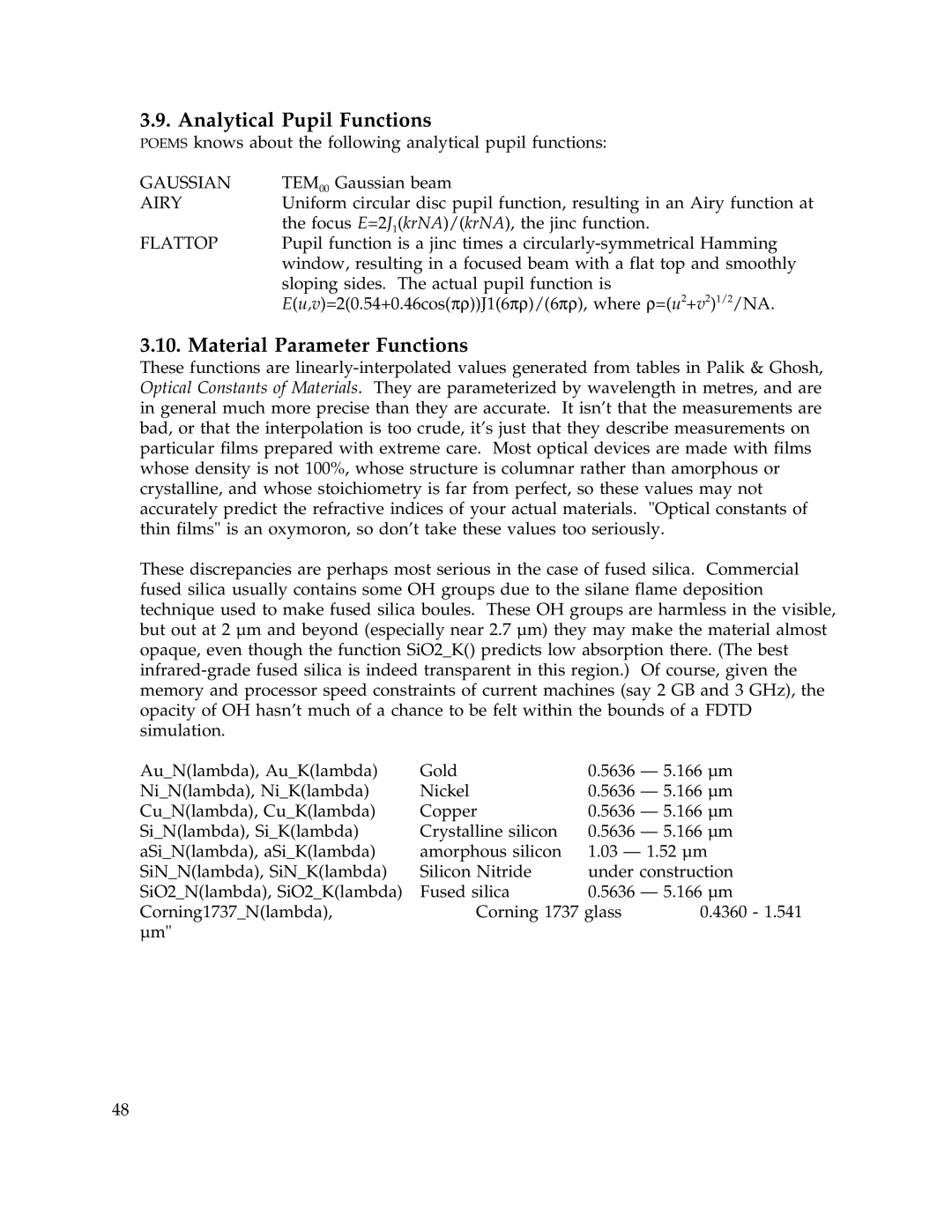3.9. Analytical Pupil Functions
POEMS knows about the following analytical pupil functions:
GAUSSIAN | TEM00 Gaussian beam |
AIRY | Uniform circular disc pupil function, resulting in an Airy function at |
| the focus E=2J1(krNA)/(krNA), the jinc function. |
FLATTOP | Pupil function is a jinc times a |
| window, resulting in a focused beam with a flat top and smoothly |
| sloping sides. The actual pupil function is |
| E(u,v)=2(0.54+0.46cos(πρ))J1(6πρ)/(6πρ), where ρ=(u2+v2)1/2/NA. |
3.10. Material Parameter Functions
These functions are
These discrepancies are perhaps most serious in the case of fused silica. Commercial fused silica usually contains some OH groups due to the silane flame deposition technique used to make fused silica boules. These OH groups are harmless in the visible, but out at 2 µm and beyond (especially near 2.7 µm) they may make the material almost opaque, even though the function SiO2_K() predicts low absorption there. (The best
Au_N(lambda), Au_K(lambda) | Gold | 0.5636 — 5.166 µm | |
Ni_N(lambda), Ni_K(lambda) | Nickel | 0.5636 — 5.166 µm | |
Cu_N(lambda), Cu_K(lambda) | Copper | 0.5636 — 5.166 µm | |
Si_N(lambda), Si_K(lambda) | Crystalline silicon | 0.5636 — 5.166 µm | |
aSi_N(lambda), aSi_K(lambda) | amorphous silicon | 1.03 — 1.52 µm | |
SiN_N(lambda), SiN_K(lambda) | Silicon Nitride | under construction | |
SiO2_N(lambda), SiO2_K(lambda) | Fused silica | 0.5636 — 5.166 µm | |
Corning1737_N(lambda), | Corning 1737 glass | 0.4360 - 1.541 | |
µm" |
|
|
|
48
